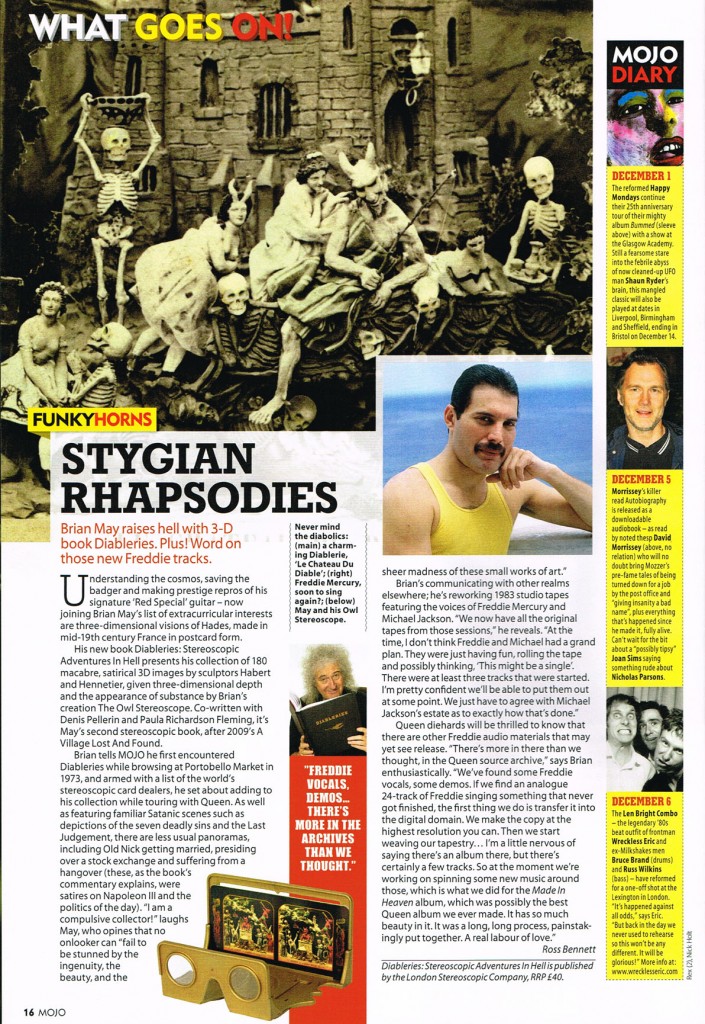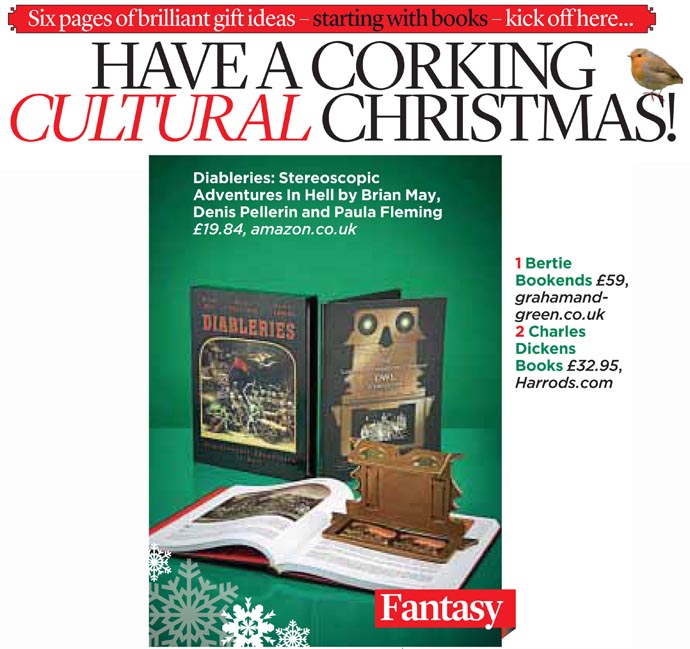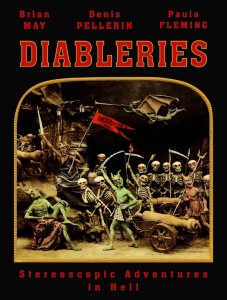![]()
Guitarist, animal rights activist, art collector – is there anything Brian May can’t do?!

Brian May is a man of many, many talents. Not only is he the legendary guitarist of the band Queen, which still tours over 40 years after it was formed back in 1970, he is also a doctor of Astrophysics, a passionate animal rights activist, and a collector of historical artefacts. His Les Diableries collection, a series of stereoscopic photographs that were published back in the 1860s, was recently exhibited in London. As the first exhibition of its kind in 160 years, Brian opened up toHELLO! about his plans to open a museum to house the unique collection.




 BRIAN TO INVESTIGATE VICTORIAN 3D IMAGES AT DMU!
BRIAN TO INVESTIGATE VICTORIAN 3D IMAGES AT DMU! At 2pm on November 6th Brian May will unveil an exhibition of stereoscopic 3D photographs that will allow visitors to the Gallery on the Green, Settle, to take a trip to the imaginary world of hell and the underworld. These photographs belong to a series created in France during the 1850s and known as the Diableries. These carefully crafted theatrical tableaux reveal a fantasy world of skeletons, devils, debauchery, that delight the eye and hold the attention of the viewer.
At 2pm on November 6th Brian May will unveil an exhibition of stereoscopic 3D photographs that will allow visitors to the Gallery on the Green, Settle, to take a trip to the imaginary world of hell and the underworld. These photographs belong to a series created in France during the 1850s and known as the Diableries. These carefully crafted theatrical tableaux reveal a fantasy world of skeletons, devils, debauchery, that delight the eye and hold the attention of the viewer.
 Brian May:
Brian May:



